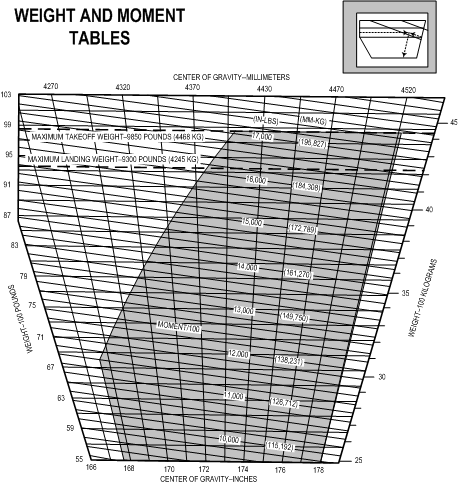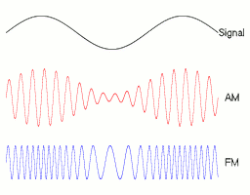Over the last couple years, I have written about many bits of technology that aircraft use. I really haven't discussed too much what bits are used when, and for what. This post, I will try and tie all the items and their use into a comprehensive post. I'll use a commercial airliner (Part 121) for the discussion, both because they typically use more technology, and because that is what my background is. I will also base most of this on flights in the US, to keep it simpler.
We can start a few hours before the flight actually leaves. As the flight approaches it's scheduled time to leave, a group of folks have started planning for the flight. Sure, there is network planning, they set up the schedules and try to be sure the flight will make money, and provide continuity, and such, but that is usually done months in advance. There are also the
simulators that the pilots use for proficiency checks, and training, but that is on going and not related to a particular flight, but important none the less.
Dispatchers and meteorologists are considering the situation between the origin and the destination of the flight. The meteorologists are generalists, looking at the weather over the country, where dispatchers are more concerned with the weather along the route between the cities. The dispatcher needs to consider the situation at the specific airports, for runway closures, and other challenges unrelated to weather. There is a tool called
Collaborative Decision Making (CDM), where the dispatchers work with the other airlines so everyone can utilize the airports and airspace as optimally as possible.
The dispatchers can use CDM to look for areas to avoid when selecting a route between the two cities. If there is a bad thunderstorm along the optimum route and all the other airlines are avoiding it to the south, the dispatcher may pick a northern route to stay out of everyone elses way. Once the dispatcher selects a
route, they need to build the rest of the
flight plan. The dispatcher will build a flight plan using many tools. The dispatcher may allow the flight planning engine to select routes, or the amount of fuel. Depending on aircraft maintenance situation, and MEL deferrals and such the flight planning engine can accurately predict the fuel burn based on weather and route.
Once the dispatchers are happy with route and fuel selected, they will
file a flight plan. The flight plan will be filed with the Air Navigation Service Provider (ANSP) for both the origin and the destination. For the US the ANSP is the FAA, in Canada is is NavCanada, and in the UK it is NATS. The ANSP handles all the RADAR and air traffic control (ATC) functions. The flight plan will give the ATC controllers a heads up on what the aircraft was planning on doing once in the air.
As the pilots get to the aircraft, one will typically do a walk around of the outside of the aircraft making sure the aircraft looks safe and no damage is visible. The other pilot will typically go to the cockpit and begin setting things up. There may be a the initialization of the
FMS, maybe a
RAIM check of the GPS, and entering the flight plan prepared by the dispatcher into the FMS. The dispatcher provided flight plan will usually include weather information for the route, and any other non weather realted information for the route (IE ATC changes, etc), The flight plan will also contain fuel and time information that the pilot can double check, insuring the dispatcher hasn't made any mistakes.
When the pilot know the fuel situation, they may confer with the fueler to adjust any fuel amounts to be put on board. The pilot will also need to know how many bags and passengers are on the flight, so they may make proper weight and balance calculations. Some airlines have a load planner who takes care of the weight and balance, others still let the pilot take care of this. Depending on the aircraft, it may be necessary to have a person dedicated to making the load calculations.
As all the passengers are seated, and the pilot is about to move the aircraft, they will ask for permission to move. There may be a ground controller dedicated to the gate area, and there will need to be taxi clearances and such needed from them. Other airports everything is controlled from the tower, and any movement must be cleared through the tower controllers. An
ACARs message may be sent requesting the Pre Departure Clearance (PDC), that will be a version of the flight plan sent to the ATC with any ATCneeded changes to the plan. The PDC will also contain the code the pilot needs to enter into the
transponder. The pilot must acknowledge receipt of the message.
After the aircraft is taxied to the runway, the pilot will ask the tower for the final airport clearance, by announcing "ready for takeoff". Once the ATC controller gives the pilot final instructions the pilot can access the runway and start the takeoff. The ATC instructions will be the route the pilot should take to get from the runway to the beginning of the flight plan route. Every bit of the instructions and plans for the takeoff are there in case there is a failure. If there is a radio failure either from ATC or the Aircraft, the instructions given are good enough for the pilot to take off, fly the planned route, and approach the destination. It is a safety situation, should the plan be the safest and most expeditious way to fly the route.
Once the aircraft is above about 300 ft, depending on the airport, the aircraft will appear on RADAR. The first
RADAR that will show the aircraft is the TRACON, who will control the aircraft after tower hands off the aircraft. The TRACON controller will control the aircraft until it is more than 30-50 miles from the airport. The TRACON will hand the aircraft off the enroute controllers who will control the flight until it is 30-60 miles from the destination airport. The RADAR data will be collected and sent to the FAA command center for others to view, and use the
ADSI information. As we move into NextGen, there may be more
ADS/B position reporting, instead of RADAR.
Once the aircraft is on the route, the pilots will typically engage the
autopilot. The autopilot will help maintain the route of flight, altitude and throttle settings to insure the aircraft flies the route planned, and uses the fuel planned. The pilot must monitor the autopilot to be sure it is engaged, and doing the right thing the whole flight. Occasionally pilots will hand fly the aircraft, for practice. Once in a while the autopilot will fail, and the pilots must had fly the aircraft. The systems in the aircraft are designed for certain
reliability levels.
During the enroute portion of the flight, there may be messages the pilots need to send to the company operations center. The pilots will usually send a text message over
ACARS if they don't have a lot of urgency to the message. The pilots also have an option for voice communication using company assigned frequencies. If there were to be a medical emergency, the voice communications will be used, if a pilot is looking for a weather report for 400 miles ahead, they will use ACARS.
As the aircraft gets closer to the destination, ATC will typically begin having the aircraft start to descend. Newer approaches follow a continuous descent profile, where the pilots set the throttles to idle at altitude, and basically use the potential energy to glide the aircraft to the runway, reducing noise, fuel burn and pollution.
Current approaches typically are designed for the aircraft to provide it's own guidance. That is there are airs on the ground (or satellite) to provide the aircraft the information it needs to know where it is, and fly to the runway. Features like
DME and ILS radions are on the ground, and
GPS satellites are in the air.
The enroute controller will hand the flight off to the TRACON controller about 50 miles from the airport, where the aircraft will be below about 10,000ft. The TRACON controller will clear the flight for the approach that it will use to get to the airport. At about 5 miles out, the pilot will be told to contact the tower, and the tower and the pilot will make the final checks and be cleared for the runway to land on. Once on the ground, the pilot will talk to the ground controllers to get to the proper parking area, and maybe a gate controller for certain airports. Once the wheels are chocked, and the engines shutdown, the pilots are mostly done with the flight.
Yes, there is a bit of technology going on between each gate, and a little before. Ever think about that before.










